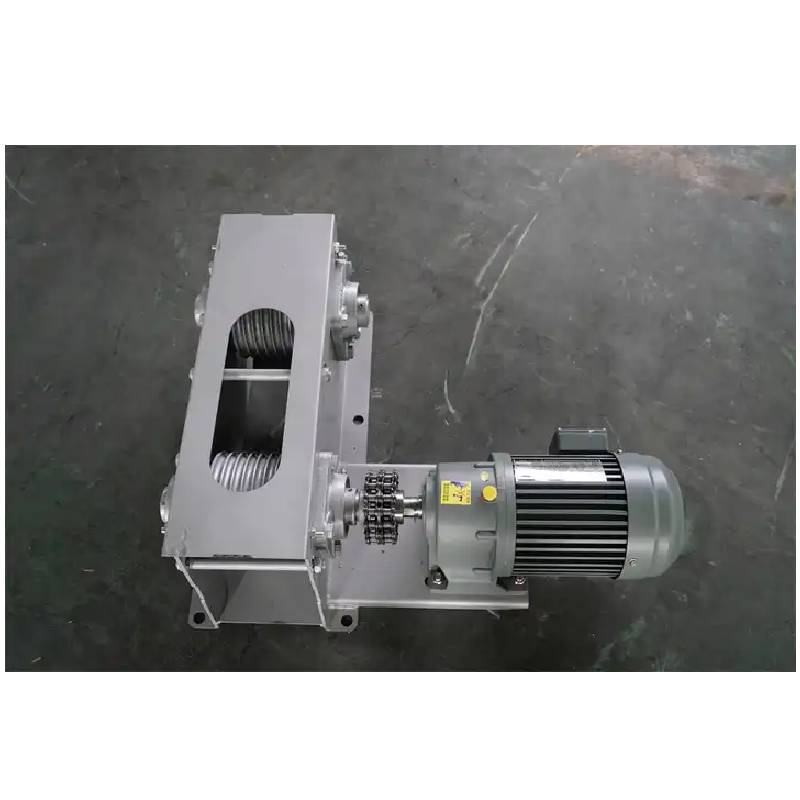Animal Pellet Feed Production Equipment for Efficient Livestock Nutrition Solutions
Dec . 19, 2024 16:25 Back to list
Animal Pellet Feed Production Equipment for Efficient Livestock Nutrition Solutions
Understanding Animal Pellet Feed Machines A Comprehensive Guide
In the world of animal husbandry and agriculture, the nutritional needs of livestock and pets are paramount. One effective solution for meeting these needs is the use of animal pellet feed. Pellet feed provides a balanced diet that is easy for animals to consume, minimizes waste, and often includes essential nutrients necessary for growth and health. To produce this type of feed, animal pellet feed machines play a crucial role.
What is an Animal Pellet Feed Machine?
An animal pellet feed machine, also known as a pellet mill, is a piece of equipment designed to compress feed ingredients into pellets. These machines can process various raw materials, including grains, seeds, and other feed components, into uniformly sized pellets that can significantly improve the efficiency of feed delivery to livestock.
The Importance of Pellet Feed
Pellet feed has several advantages over traditional loose feed. First, pelleting helps in enhancing the digestibility of the feed. The high-temperature steam used during the pelleting process gelatinizes the starches, which can boost nutrient absorption. Second, pellets reduce waste as animals tend to clean up pellets more thoroughly than loose feed. This is especially crucial in commercial farming, where feed cost constitutes a significant portion of operating expenses.
Moreover, pelleted feed can help in the control of selective feeding behavior. Animals are less likely to pick and choose their food when it comes in pellet form, ensuring a more balanced intake of nutrients. This is particularly beneficial for ruminants, poultry, and aquaculture species that thrive on balanced diets for optimal growth and production rates.
How Do Animal Pellet Feed Machines Work?
animal pellet feed machine

The operation of an animal pellet feed machine involves several steps. Initially, the raw materials are ground into fine particles using a grinder. The choice of particle size depends on the type of animals being fed and the specific formulation of the pellet. Once the materials are ground, they are mixed with other ingredients, such as vitamins, minerals, and binders, to form a comprehensive feed mixture.
The next step is conditioning, where the mixture is treated with steam and heat. This process not only softens the raw materials but also kills bacteria, molds, and pathogens, making the feed safer for consumption. The conditioned feed is then fed into the pellet mill, where it is forced through a die under high pressure, resulting in the formation of compact pellets.
Once the pellets are formed, they are cooled to stabilize their structure and prevent moisture retention. Finally, the pellets can be packaged or stored for use.
Types of Pellet Feed Machines
There are various types of pellet feed machines adapted to different scales of production. Small-scale farmers might opt for flat die pellet mills, which are more affordable and easier to operate. In contrast, larger operations typically use ring die pellet mills, which can handle higher production volumes and provide more uniform pellet sizes.
Choosing the right type of pellet feed machine depends on several factors, including the quantity of feed needed, the types of ingredients used, and the specific dietary requirements of the animals being fed.
Conclusion
Animal pellet feed machines are essential tools in modern agriculture, helping farmers and producers achieve efficient animal nutrition. By understanding the mechanics of these machines and the benefits of pelleted feed, producers can enhance the health and growth rates of their livestock while optimizing their feed operation costs. As technology continues to advance, we can expect even greater innovations in feed production, leading to healthier animals and more sustainable farming practices. Thus, investing in a high-quality animal pellet feed machine is a step towards an efficient, sustainable, and profitable agricultural future.
-
Hot Sale 24 & 18 Door Rabbit Cages - Premium Breeding Solutions
NewsJul.25,2025
-
Automatic Feeding Line System Pan Feeder Nipple Drinker - Anping County Yize Metal Products Co., Ltd.
NewsJul.21,2025
-
Automatic Feeding Line System Pan Feeder Nipple Drinker - Anping County Yize Metal Products Co., Ltd.
NewsJul.21,2025
-
Automatic Feeding Line System - Anping Yize | Precision & Nipple
NewsJul.21,2025
-
Automatic Feeding Line System - Anping Yize | Precision & Nipple
NewsJul.21,2025
-
Automatic Feeding Line System-Anping County Yize Metal Products Co., Ltd.|Efficient Feed Distribution&Customized Animal Farming Solutions
NewsJul.21,2025






